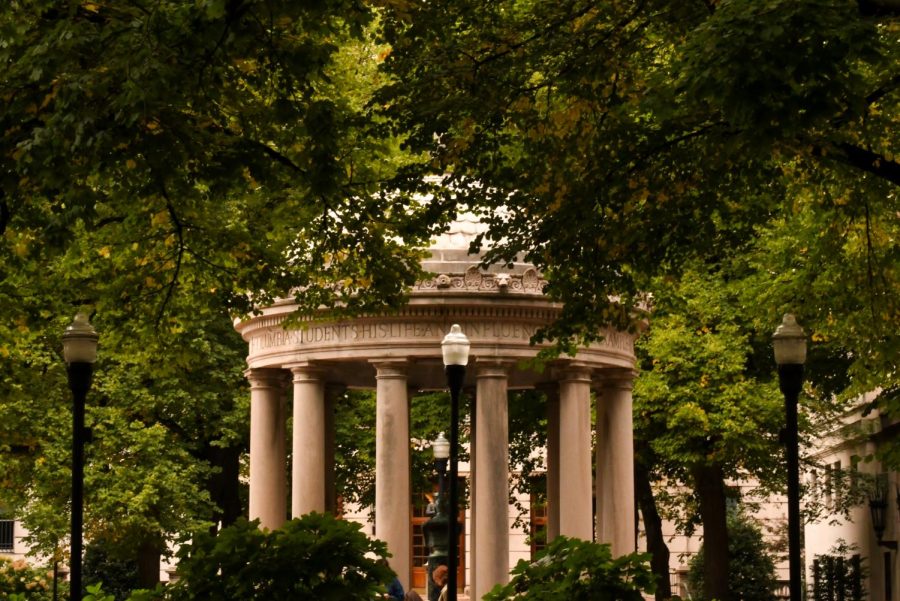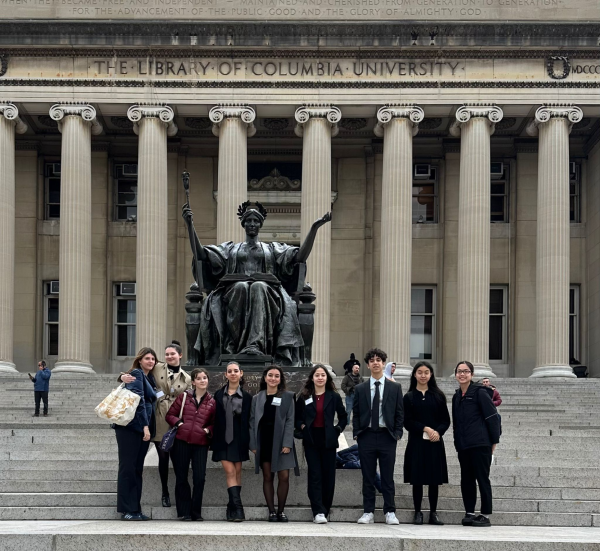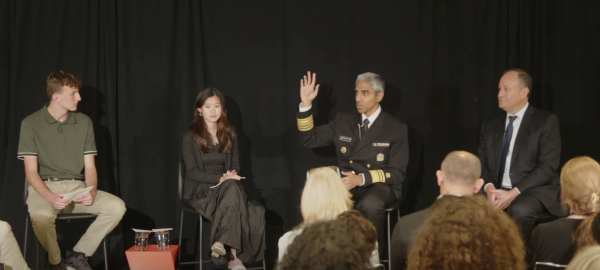The Ever-increasing Price of American Colleges
Photo by Maya Din
Columbia University
Over the last few decades, the average cost of getting a college degree in America has skyrocketed, even when taking overall inflation into account. Since 1980, college tuition and fees are up 1,200%, while the Consumer Price Index (or CPI) for all items has risen by 236%. Furthermore, citing research from the College Board, CNBC reports that, adjusting for inflation, the cost of private schools has risen by 129% since the 1980s and the cost of public schools has risen by an even more staggering 213%. However, wages across the board have only increased by 67% since the 1970s.
According to The Atlantic, Americans spend about $30,000 per student a year; this includes the contributions of individual families and the government (in the form of student loans, grants, and other assistance). While this expense is nearly twice as large as in the average developed country, there is no evidence that it results in better academic outcomes or more professional opportunities. So, why is college in the U.S. so expensive? And why does the cost continue to grow?
One of the most important factors which contributes to the cost of college is one which is uniquely American: “The College Experience”. In the United States, college is often viewed as a comprehensive life experience as opposed to just an academic one.This inherently increases the cost of universities. In other places like Europe or Canada, a large proportion of students may not leave home for an on-campus living experience, whereas residential campus experiences are commonplace in the U.S. This means that a significant portion of tuition payments in the United States go towards dorm rooms and other forms of on-campus housing. Other services like dining, transportation, and the provision of student centers also contribute to the cost of tuition; these are often referred to as auxiliary services. The Atlantic reports that American taxpayers spend more than $3,000 a year on all of these services combined.
However, amenities alone do not account for the reason American colleges are so expensive. Even if we were to remove those costs from consideration, Americans would still be outspending all other developed countries around the world. The main reason for this is the cost of administrative and educational operations, which account for roughly $23,000 per student every year. Strangely, this money does not go towards the salaries of faculty — in fact, the average professor’s salary has barely changed since 1970. Instead, the money is used to pay for the increasing amount of salaries of those in administrative positions. According to The New York Times, research from the Department of Education found that administrative positions at colleges and universities grew by 60% between 1993 and 2009, which was 10 times the rate of growth of tenured faculty positions like professors. Moreover, The New York Times reported that the number of faculty in the California State University system grew from 11,614 to 12,019 between 1975 and 2008. On the other hand, the total number of administrators grew from 3,800 to 12,183 which is a 221% increase.
This increase in administrative positions can be justified due to the rising demand of higher education in the United States and the fact that schools are taking on more students every year. For example, in the fall of 2017, U.S. colleges received about 20.4 million students, which was roughly 5.1 million more than in the fall of 2000; the numbers continue to increase each year. This is because a college education is often seen as a necessity to achieve a high-paying job in today’s economy. In other words, despite the rising costs, the desire to go to college amongst young Americans is actually increasing. This creates competition both among students applying to university and between the institutions themselves. As a result, higher education in the United States has become commercialized with colleges behaving like companies in order to capture the attention of students and achieve higher rankings. This attitude has been adopted by for-profit institutions in particular, many of which have increased the price of tuition in order to bring more prestige to their degrees without actually increasing the quality of education they provide.
Ironically, as the cost of education continues to rise, the willingness of state and federal governments to dedicate public funding to higher education has remained unchanged, which has severely impacted the cost of the public college system. Three out of every four American college students attend a school in the public system, which is funded through state and local subsidies, along with students’ tuition, and some federal aid. In the public system, the high cost of tuition is closely related to politics and the way higher education is regarded by each state. Many state legislatures have been spending less and less per student on colleges and universities for the past three decades. The cuts were particularly impactful after the 2008 recession, and the easiest way for colleges to make up for these cuts was to shift some of the cost to their students. Therefore, public institutions began increasing the price of their tuition and seeking out wealthier students in order to fulfill the need for more funding. This means that those who need access to public education are no longer able to afford it.
Overall, the increasing cost of college tuition in the United States can be attributed to a wide variety of factors all of which are related to the way college is perceived by different groups—the American public, the colleges themselves, students, and states. These beliefs are deeply ingrained into each community, and it would therefore be extremely difficult to adjust them to benefit the increasing number of students which can no longer afford a college education. However, this trend of rapid increase in the price of college tuition could be stopped or at least slowed down by the state and federal government by providing more funding for higher education. This shift would be extremely beneficial because going to college allows students to benefit from unique experiences and provides a foundation for a prosperous future in both their personal and professional lives.

Hi, my name is Maya Din and I'm a member of the class of 2023. I love traveling, photography, baking, and reading! Currently, I edit and write in the opinion...













